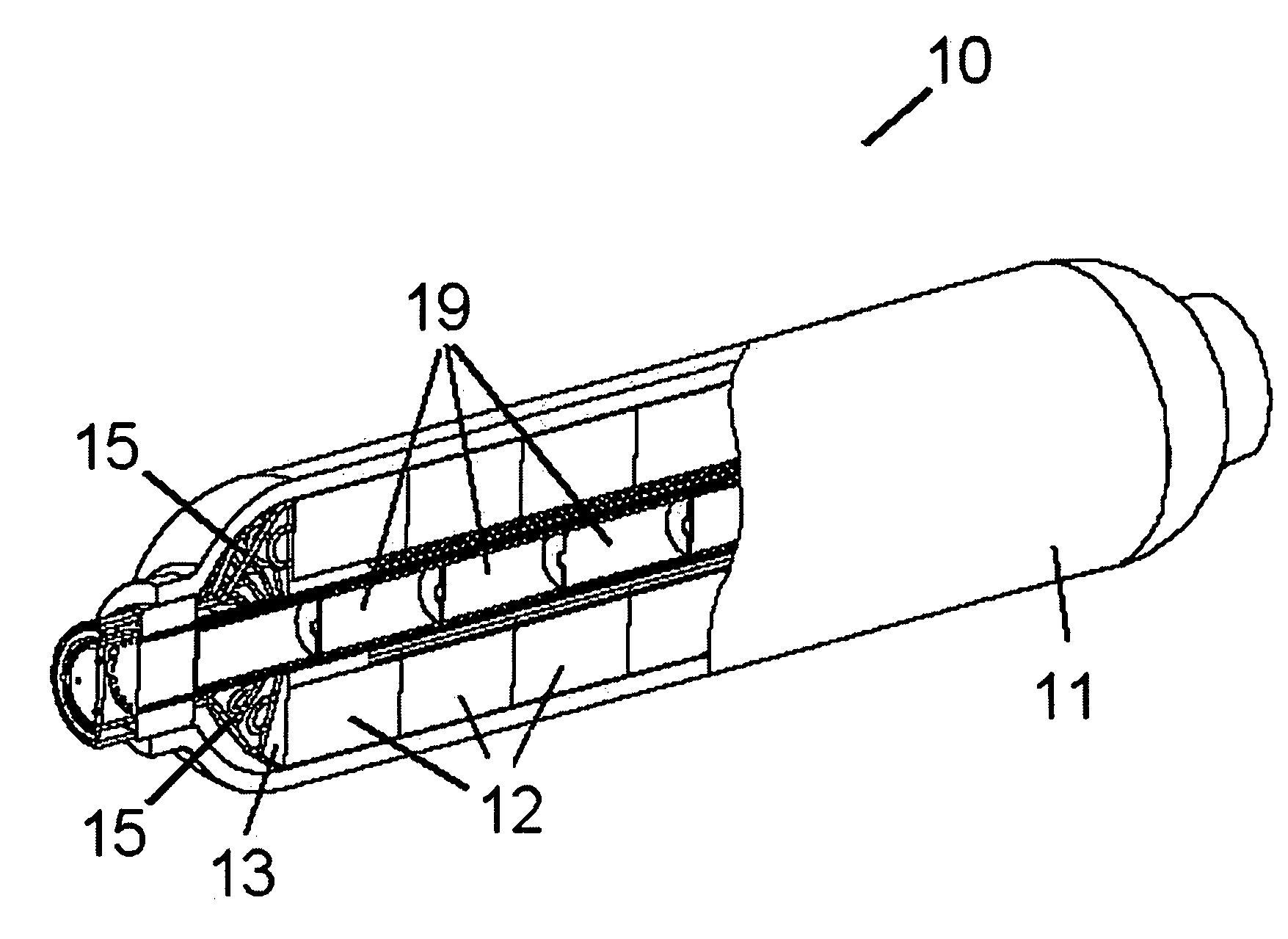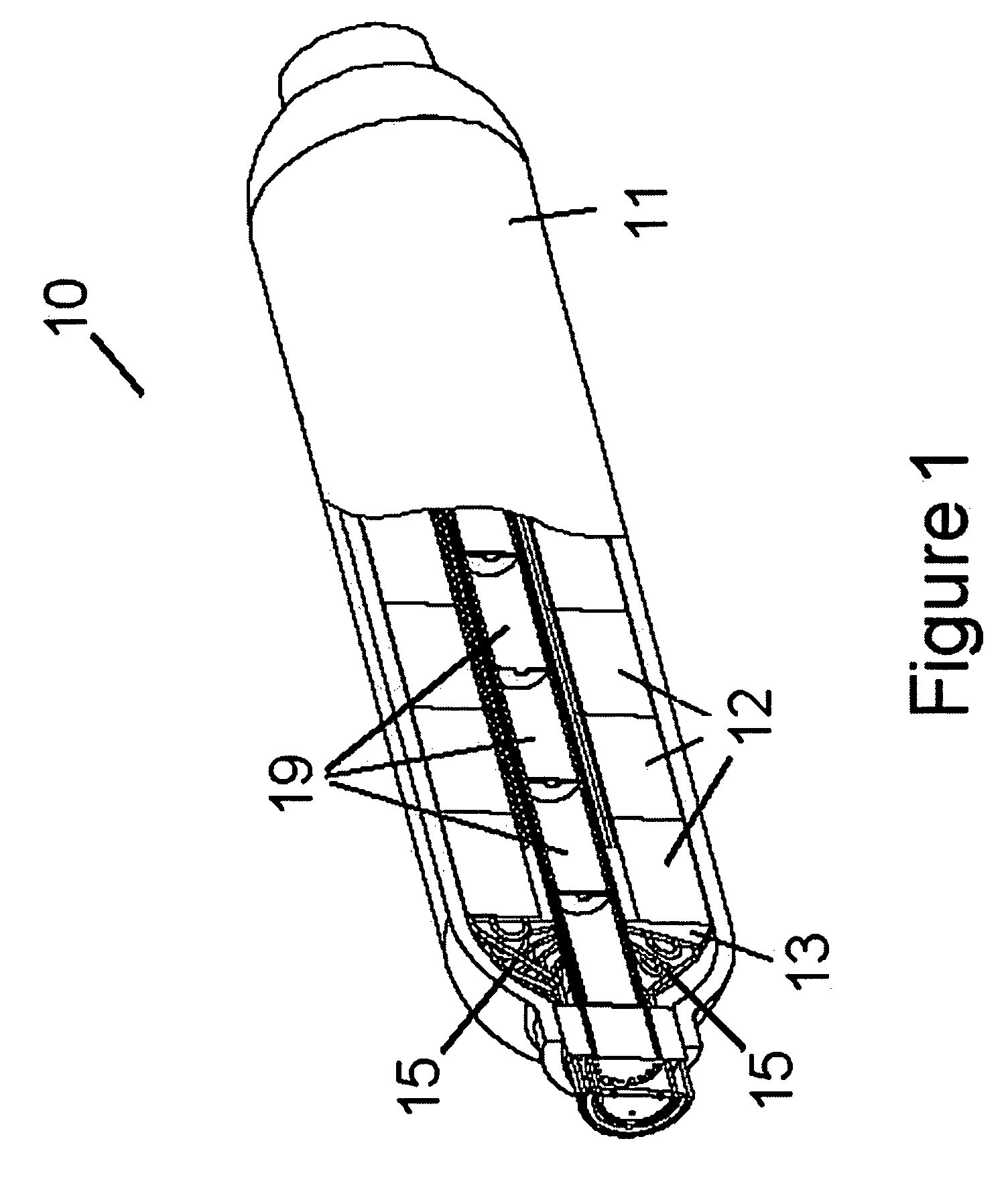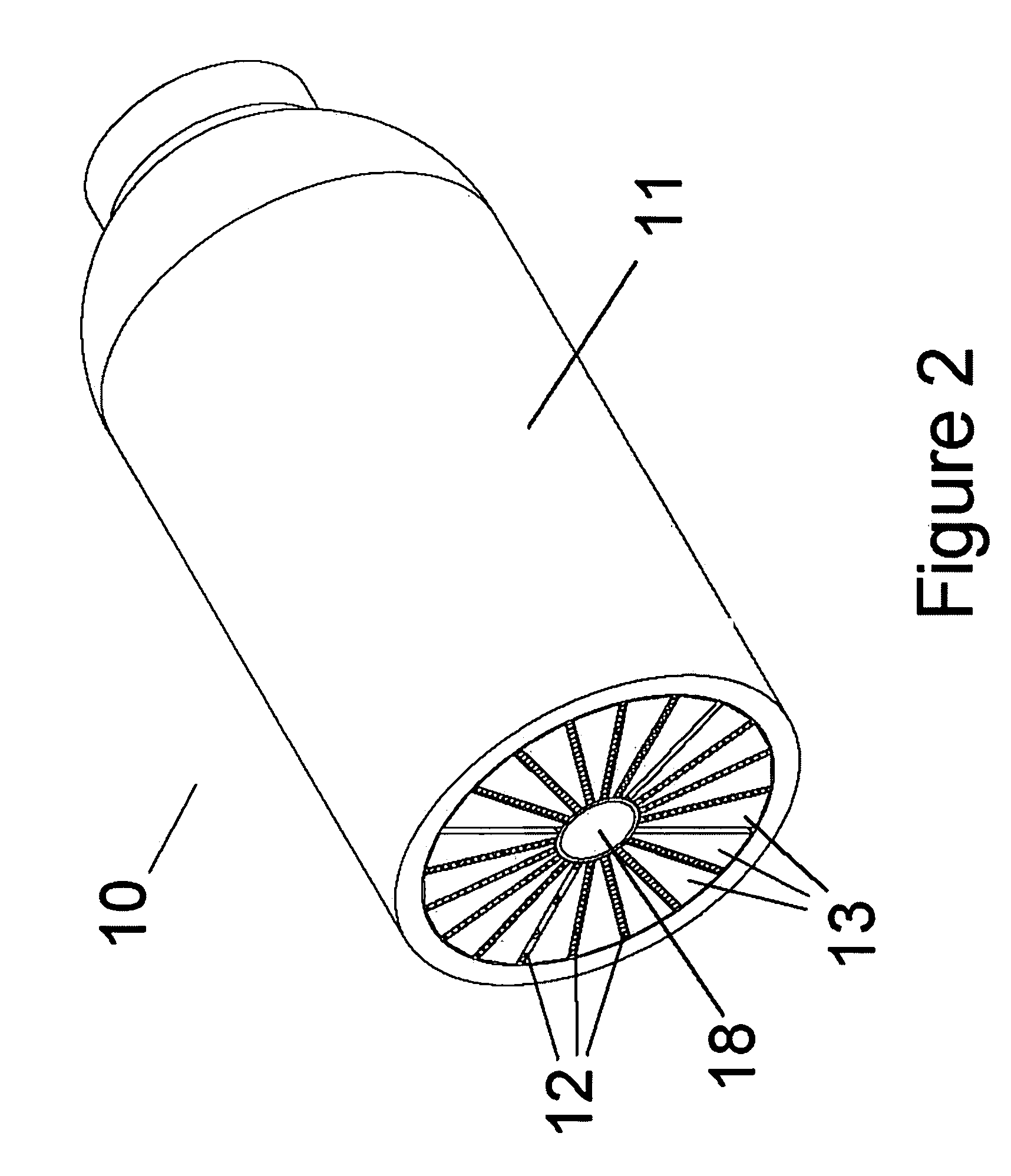Modular metal hydride hydrogen storage system
a hydrogen storage system and metal hydride technology, applied in transportation and packaging, separation processes, packaging goods types, etc., can solve the problems of lack of acceptable hydrogen storage medium, high cost of hydrogen,
- Summary
- Abstract
- Description
- Claims
- Application Information
AI Technical Summary
Benefits of technology
Problems solved by technology
Method used
Image
Examples
Embodiment Construction
[0019]In accordance with the present invention there is provided herein a modular metal hydride hydrogen storage unit. Through compartmentalization, the metal hydride hydrogen storage unit maintains a substantially uniform metal hydride powder density after repeated cycling. The design of the metal hydride hydrogen storage unit reduces the amount of strain applied on the interior of the hydrogen storage unit as a result of the expansion of the hydrogen storage material upon absorbing and storing hydrogen in metal hydride form. The metal hydride hydrogen storage unit may also be able to absorb a portion of the stress created by the expansion of the hydrogen storage material thereby further reducing the strain applied on interior of the hydrogen storage unit. The modular design of the metal hydride hydrogen storage unit also allows for assembly of the hydrogen storage unit using prefabricated pressure containment vessels.
[0020]An embodiment of the hydrogen storage unit in accordance w...
PUM
| Property | Measurement | Unit |
|---|---|---|
| temperature | aaaaa | aaaaa |
| pressure | aaaaa | aaaaa |
| temperature | aaaaa | aaaaa |
Abstract
Description
Claims
Application Information
 Login to View More
Login to View More - R&D
- Intellectual Property
- Life Sciences
- Materials
- Tech Scout
- Unparalleled Data Quality
- Higher Quality Content
- 60% Fewer Hallucinations
Browse by: Latest US Patents, China's latest patents, Technical Efficacy Thesaurus, Application Domain, Technology Topic, Popular Technical Reports.
© 2025 PatSnap. All rights reserved.Legal|Privacy policy|Modern Slavery Act Transparency Statement|Sitemap|About US| Contact US: help@patsnap.com



